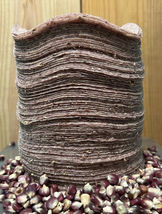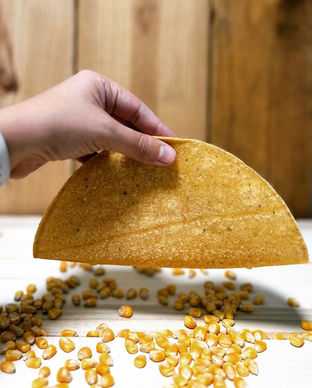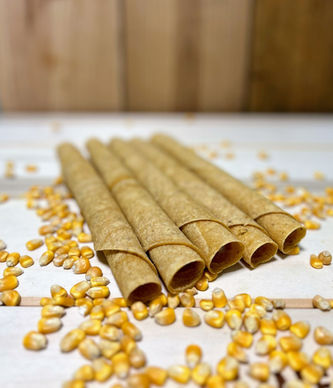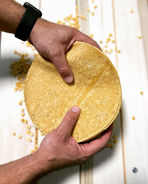

Origins: Ancestral Heritage

Tortillas, originally called "Tlaxcalli" by our ancestors, are a staple food in many cultures, and their origins can be traced back to ancient civilizations. As we celebrate our ancestral heritage, it's important to recognize and support the indigenous communities that have been making tortillas for generations. Let's be proud of our roots and continue to honor the traditions that have brought us this delicious and versatile food! To learn more about tortillas' history and the nixtamalization process our ancestors used to make them, please keep reading!

Tlaxcalli, the origin of tortilla as we know it today.
Tlaxcalli is the Nahuatl name with which tortillas were firstly known, the basis of Mexican food from corn; fruit of the earth from which the first men were born, according to the cosmogony of the original cultures.
The origin of the tortilla in Mesoamerica dates back to before 500 BC. C. For example, in the Oaxaca region there is evidence that the tortilla began to be used at the end of the Villas Period (1500 to 500 BC), this is known because the clay plates used for its cooking appeared at that time. The pre-Columbian civilizations of Mesoamerica used corn as their basic food, as did the modern society of this same region.
The first chronicles describe the Mesoamerican tortilla as corn bread, even the first translation into Spanish in the chronicle of Francisco López de Gómara of the name of the city of "Tlaxcala" was used as: "Tlaxcallan, means baked bread or bread house; since more centli is taken there than in the surrounding areas"... Currently the toponymy of Tlaxcala is derived from the Nahuatl: tlaxcalli tlán: place of tortilla.
In the first dictionary of the Mexican language (1555), Fray Alonso de Molina points out as “Corn tortilla or bread, generally” for the meaning of the word Tlaxcalli. Fray Bernardino de Sahagún would describe in his observations that the tortillas that the gentlemen ate every day were called “Totonqui tlaxcalli tlacuelpacholli”; which means “White, hot, folded tortillas.” They were served in a chiquihuite (small basket) wrapped in a white cloth.
Modern Mexican society could consider the word Tlaxcalli as the “original name” of tortillas, since that is what the first conquistadors to arrive in Mexico knew them, during the first true interaction between the old and the new World.
At first, what was common was to see the indigenous people eating their tlaxcalli hot and fresh from the comal, well seasoned with chili, giving birth of the unique Mexican gastronomy that the world enjoys today.




What is Nixtamalization?
The word nixtamal—pronounced by giving the letter x a soft “sh” sound—puts together two Nahuatl terms: nixtli meaning “ashes,” and tamalli meaning “cooked maíz masa.” It’s the dough that—when nixtamal first originated in 1,000 B.C.—was used to make tamales, wrapped and steamed maíz cakes, and maíz drinks, like the thick and warming atole and cool fermented tejuino. Tortillas came after.




















